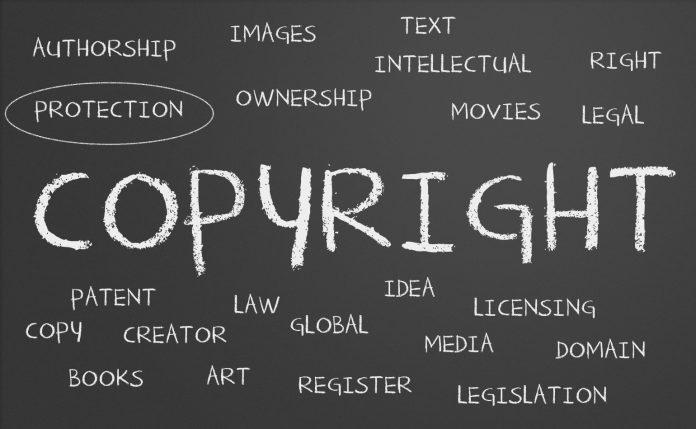This article is written by Ayushi Jhawar, pursuing a 6-Month Growth Camp: Preparation for LLM Abroad from LawSikho. The article has been edited by Zigishu Singh (Associate, LawSikho) and Smriti Katiyar (Associate, LawSikho).
Table of Contents
Introduction
Copyright is a form of intellectual property governed under the Copyright Act, 1957 in India which protects creators of original artistic works such as literary works, music, music recordings, films, and television programming. It is granted to the original authors of computer programs, tables, compilations, computer databases, and dramatic and musical works. Copyright protection requires that work meet three requirements. It must be:
- Original: In order to be considered original, a work must be created independently. Another work cannot be copied. For a work to meet the originality criteria, it only needs to demonstrate a small amount of creativity.
- Authorship work: The definition of a work of authorship for the purposes of copyright protection requires that a creative product falls under a copyright-protected subject matter category.
- Fixed: A tangible medium of expression is required to meet the fixation requirement. If a work is sufficiently stable or permanent enough to be viewed, reproduced, or otherwise communicated for an extended period of time, then it is considered to be fixed.
The duration for copyright in India is 60 years after the death of the author. When the work expires it enters the public domain. Despite the fact that copyright law aims to enrich the general public through the accessibility of creative works, creators are under no obligation to make their copyrighted works available. However, copyright registration has certain advantages not only to the author but to the public as well.
Thus, the Copyrights Act is an incentive for creation. Not taking into account other factors hampers cultural creativity where creative participation is open for everyone. This article analyses the importance of copyright as an incentive and also pinpoints reasons where creativity is not merely incentivised by copyrights but other motivating factors.
Reasons for providing copyrights as incentives
We grant copyright because it’s an incentive for people to create, and companies to invest in making them available. There is no doubt that copyright is one of the best institutional designs for supporting the development of a commercial creative industry even in developing countries.
Incentives are often enacted in order to encourage the creation of new works for public use through copyright laws. New works are rewarded by the government with an exclusive monopoly over that work for a certain period of time, after which the public may enjoy it.
In accordance with Section 14 of the Act, copyright consists of a bundle of exclusive rights vested in the owner. Owners of copyrights may only exercise these rights or those who are duly licensed to do so by the owner of the copyright. These rights include the right to adapt, reproduce, publish, make translations, and communicate publicly. Copyright opens up a revenue stream in the form of copyright royalties for the author, which helps in the development of the economy.
Apart from these economic benefits, copyrighted work provides certain moral rights under Section 57 of the Indian Copyright Law. It gives the right of paternity, which is an author’s right to claim his work as his own and to prevent anyone else from claiming it. It also provides for the right of integrity, where the author is entitled to prevent distortion, mutilation, or other modifications to his work, or any other action in connection with such a work that would be detrimental to his honour or reputation. However, not all benefits from the copyright law result in creativity. There may be other reasons for an increase in creativity and not necessarily copyright as an incentive to creativity.
Other factors acting as incentives for creativity
Creative ideas are often supported by other factors besides formal Intellectual Property (IP) recognition, such as market incentives, cognitive psychology, social norms, first-mover advantages, path-dependency, or just plain luck. It is going to be very challenging to map out these factors across fields that vary greatly in terms of markets, participants, practices, and norms.
Observing a copyright-dependent industry makes it difficult to determine if the license is causally related to creativity in that setting, or merely coincidental. A good place to start would be in creative fields that have little or no intellectual property protection.
Some examples are culinary arts, fan fiction, financial instruments, fashion design, sports plays, stand-up comedy, tattoos, and professional magic. Fanfiction, for example, or magic are very niche. However, some of them are huge, such as fashion and cuisine. When we see innovation in these fields, we ought to ask what, beyond copyright, is promoting investment in new creativity.
According to the WIPO study, reputational rewards and returns from altruistic behaviour are important sources of satisfaction for artists. As an example, prizes and grants generate recognition and appreciation for artistic work that exceeds the satisfaction gained from transferring money and annuities (income or prize money alone). There are, however, some trade-offs involved. Artists who perform in public and practice arts altruistically report being more satisfied, however such “give-away culture” also decreases their income. It is less clear-cut than one would have expected from previous economic research that “procedural utility” represents another source of motivation – in other words, the satisfaction artists derive from working in the arts and involving themselves in creative processes. The motivational level of creativity is subjective for each artist or author.
Considering an example of the fashion industry, it is evident that minimal IP is applied. Fashion design is appealing, and it is copied. The design gains market prominence as others adopt it until it becomes a trend. Copying creates trends, and trends promote fashion. It is, however, a two-way street. The trend becomes overdone as more copies of the design appear, and early adopters abandon the trend that copying is helping cement. That’s how trends work. Copying plays a vital role in this process. It fuels the cycle and makes it more efficient. Despite its lack of protection from intellectual property, the fashion industry is not a soulless wasteland-or, if it is, then those incentives aren’t the reason. Sometimes copying contributes to creativity, causing consumer demand, which leads to more production in the fashion industry. This is a very different story from the traditional view that linking copying with creativity justifies copyright laws.
Similarly, considering aesthetic sports. IP law is not very prominent for the same. However, the motivation of the performing artists continues due to rewards and achievements associated with such fields and the reputation one secures by doing such creative acts.
Taking the example of stand-up comedy, though the IP laws are prevalent for the same, the motivation for content creation is not copyright. The motivational factor is the fame or reputation associated with it. Creative content gives chances to comedians to enter new areas such as television, shows, or even movies nowadays.
Conclusion
To ensure that new works are created and made available to the public to enjoy, the primary objective of copyright is to incentivize and reward authors through the provision of property rights. According to this theory, created works are protected from theft by granting certain exclusive rights to creators, who are rewarded with economic benefits, while the public is rewarded with creative works that might not otherwise be created or disseminated. Policymakers should consider all relevant sources of motivation when determining intervention goals and evaluating their impact in order to maximize the benefits to society.
The way works can be attributed to artists is affected by legal mechanisms. Prior research has given too little attention to the issue of attribution and the value of moral rights to creators. Although a study in this area has raised the question of whether national copyright systems are to differ in their treatment of moral rights.
Reforms focused on income may fall short of policy goals. As a result, policy choices in this area are particularly challenging, since they need to be balanced between the concerns and interests of new amateur creators, original creators, and right holders, as well as society’s taste for variety, especially when it comes to “transformative” uses. A strong emphasis should be placed on balancing rights with monetary incentives. Good governance has to go beyond simply accounting for monetary incentives.
Otherwise, copyrights can be a tax on learning. In other words, a tax on culture and threatens creative growth. The tax is imposed on speech. These taxes are not just an inconvenience. People who cannot or will not pay it to face a barrier. Copyright can hinder the spread of knowledge and culture by excluding some people from art and literature that they would otherwise consume.
Legal frameworks that are designed to encourage creativity can also provide untapped motivational sources. The discussion needs to extend beyond income and the income effects on creativity and focus on the mechanisms enshrined in copyright law.
References
- Vaish Associates and Advocates, India: Copyright Law in India, Mondaq, (Jun., 2015), https://www.mondaq.com/india/licensing-syndication/406982/copyright-law-in-india.
- Christopher Jon Sprigman, Copyright and Creative Incentives: What We Know (and Don’t), Houston Law Review, Vol. 55, No. 2, 2017, NYU Law and Economics Research Paper No. 18-03, (Jan.02, 2018) https://ssrn.com/abstract=3095740.
- Alexander Cuntz, Copyright and the currency of creativity: beyond income, WIPO Magazine, (Jun., 2019), https://www.wipo.int/wipo_magazine/en/2019/03/article_0003.html.
- Jonathan M. Barnett, Shopping for Gucci on Canal Street: Reflections on Status Consumption, Intellectual Property, and the Incentive Thesis, 91 VA. L. REV. 1381, (2005).
- Seemantani Sharma, A Copyright Incentive for Promoting ‘Aesthetic Sports’ in India, Entertainment and Sports Law Journal 17(1), p.7, (2019), https://doi.org/10.16997/eslj.232.
- Rebecca Giblin, The difference between copyright’s rewards and incentives (and what it means for getting creators paid), Authors Interest, (Oct., 2018), https://authorsinterest.org/2018/10/26/the-difference-between-copyrights-rewards-and-incentives-and-what-it-means-for-getting-creators-paid/.
Students of Lawsikho courses regularly produce writing assignments and work on practical exercises as a part of their coursework and develop themselves in real-life practical skills.
LawSikho has created a telegram group for exchanging legal knowledge, referrals, and various opportunities. You can click on this link and join:
https://t.me/joinchat/J_0YrBa4IBSHdpuTfQO_sA
Follow us on Instagram and subscribe to our YouTube channel for more amazing legal content.
 Serato DJ Crack 2025Serato DJ PRO Crack
Serato DJ Crack 2025Serato DJ PRO Crack











 Allow notifications
Allow notifications



